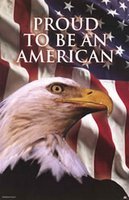Tuesday, July 18, 2006
Good Tuesday, friends...I don't know about your part of the country but it's stinkin' HOT here. It was like 95 and humid...yea, yea, I know...to Texans that ain't hot. Well this ain't Texas...and we ain't used to it. My brain synapses are misfiring...LOL!
Today we continue with Donald Maass' Writing a Breakout Novel. This is a fabulous book and I encourage each of you to buy it. What I'm presenting here is by no means a full lesson and there is a wealth of insight and additional info that will help you.
In case your just joining us...What I am attempting to do here is present truncated versions of each of the lessons in the workbook. We're done with Character Development, now we're moving on to Plot Development! Today's lesson is in Section TWO: Weaving a Story.
Yesterday we added layers. The next is to get them to work together. Without linking them you might as well be writing separate novels for each layer. Weaving them together is finding ways for them to coexist.
The devices that you use to make the connections are called nodes of conjunction. A setting in your story may recur in different layers, thus serving double duty. A character who faces his own problems in a subplot may bring relief, or introduce a complication, to your protag, who is facing their own conflict.
Secondary characters can get dragged into storylines they did not expect to grapple with. These are the ways in which storylines cross. Count the nodes of conjunction that weave together the layers in your novel. How many are there? Search for more!
Step 1: On a single sheet of paper, make three columns. In the first one list major and secondary characters. In the middle, list the principle narrative lines, main problems, extra plot layers, subplots, minor narrative threads, questions to be answered in the course of the story, etc, In the third column list the novel's principle places and major settings.
Step 2: With circles and lines, connect a character, a narrative line, and a place. Keep drawing lines and circles at random, making connections. See what develops. When a random connection suddenly makes sense...make notes.
Note: Try this and you will find connections you never saw before, characters that cross from one storyline to another, settings that host more than one storyline. these nodes of conjunction give a novel texture, a feeling of being woven together.
Follow-up: Add to you novel at least six of the nodes of conjunction that you came up with.
Conclusion: You may feel that you story is runninf away from you out of control. This panic is normal. Trust the process. If you have set a strong central problem, added layers, and found ways to weave them together, then the whole thing will come together in the end!
Here are some interesting Facts to peruse!
1. The longest one-syllable word in the English language is "screeched."
2. "Dreamt" is the only English word that ends in the letters "mt"
3. Almonds are members of the peach family.
4. The symbol on the "pound" key (#) is called an octothorpe.
5. The dot over the letter 'i' is called a tittle.
6. Ingrown toenails are hereditary.
7. The word "set" has more definitions than any other word in the English language.
8. "Underground" is the only word in the English language that begins and ends with the letters "und."
9. There are only four words in the English language which end in "-dous": tremendous, horrendous, stupendous, and hazardous.
10. Los Angeles's full name is "El Pueblo de Nuestra Senora la Reinade los Angeles de Porciuncula" and can be abbreviated to 3.63% of its size,L.A.
11. An ostrich's eye is bigger than its brain.
12. Tigers have striped skin, not just striped fur.
13. Alfred Hitchcock didn't have a belly button. It was eliminated when he was sewn up after surgery.
14. Telly Savalas and Louis Armstrong died on their birthdays.
15. Donald Duck's middle name is Fauntleroy.
16. The muzzle of a lion is like a fingerprint - no two lions have the same pattern of whiskers.
17. A pregnant goldfish is called a twit.



























Today’s lesson is actually my favorite part of plot development, except for the “conjected nodes” thingy, but the make a cream for that. ... I’m sorry to here other writers have that problem too.
Bernita...I'm with you...it's making my head spin, or maybe that's the heat...LOL!
Go for it Dennie, keep me honest...if you debunk any, I'll give you the credit...although you've got your hands full with a kid in casts...plural...sheesh!
Morning Jel...what ya' up to?
Hey, great post today. Those "facts" at the end were a hoot, too:-)
Or ponderous?
Those words describe me very well when it's hot and muggy, that's for sure.